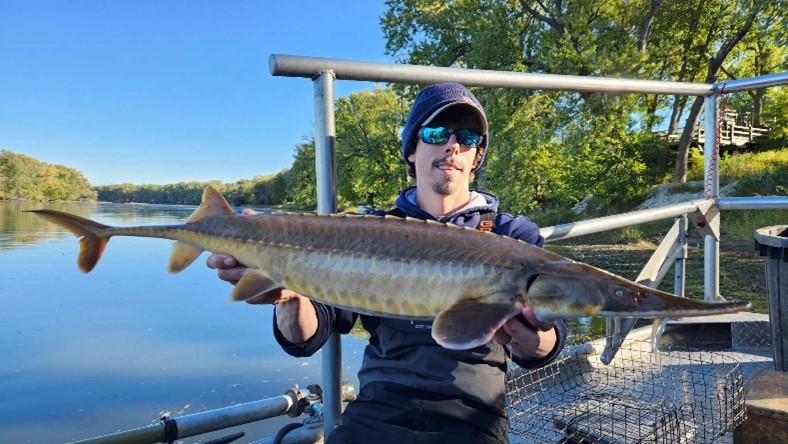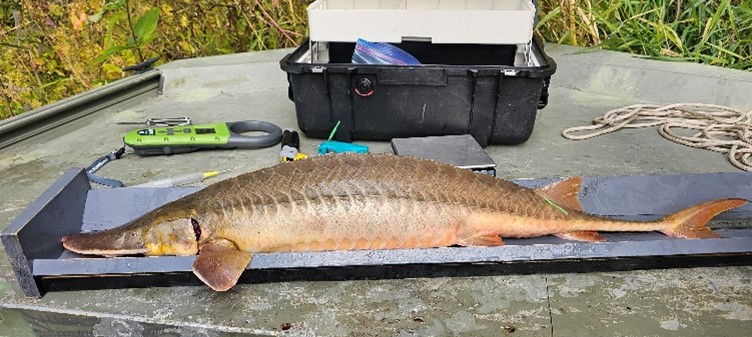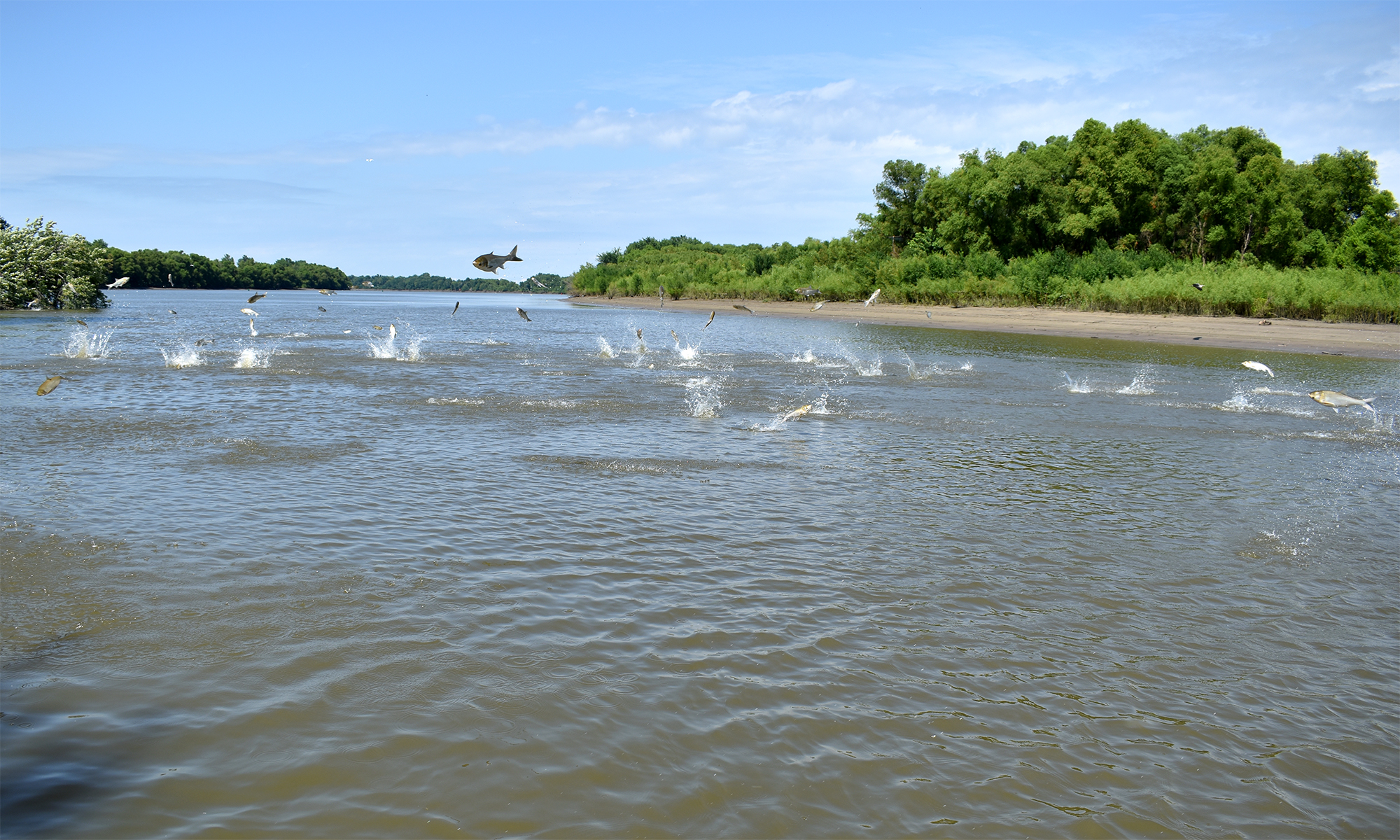Shovelnose sturgeon are the smallest among North American sturgeon species and endemic to the Mississippi River system and its tributaries. Although the species is generally considered widespread and abundant, populations have dramatically decreased over the past century due to overharvest, pollution, and habitat fragmentation (dams). Routine and intensive monitoring is required by researchers to monitor and manage population levels, as well as advance our understanding of species biology and life history.

Little information is known about the shovelnose sturgeon population in the Rock River, IL. IRBS staff is conducting year-round research to evaluate shovelnose sturgeon metapopulation dynamics (population estimates, demographics, recruitment, survival, and growth) in the Rock River to determine population status and help guide shovelnose sturgeon management in Illinois.
This multi-year approach relies on intensive monitoring and mark/recapture surveys, as well as evaluation of sturgeon movements using a network of hydroacoustic receivers throughout the Rock River and existing infrastructure in the Mississippi River. Acoustic telemetry coupled with traditional mark-recapture/population assessments provide a powerful framework to delineate metapopulation boundaries, better understand dam passage and fragmentation, and determine transition probabilities between river reaches to feed spatially explicit models for shovelnose sturgeon.

Additional studies seek to evaluate reproductive success, juvenile recruitment, and habitat use. Further, samples collected from shovelnose sturgeon (i.e., tissue, fin rays, and otoliths) provide vital information on age determination using traditional methodologies and advanced bomb radiocarbon dating, as well as natal origin using microchemistry, and various genetic studies.
These projects are collaborative efforts with numerous state and federal agencies and projected to be ongoing for the next 5-7 years. These projects are coordinated by Stefan Tucker in Morrison, IL.

